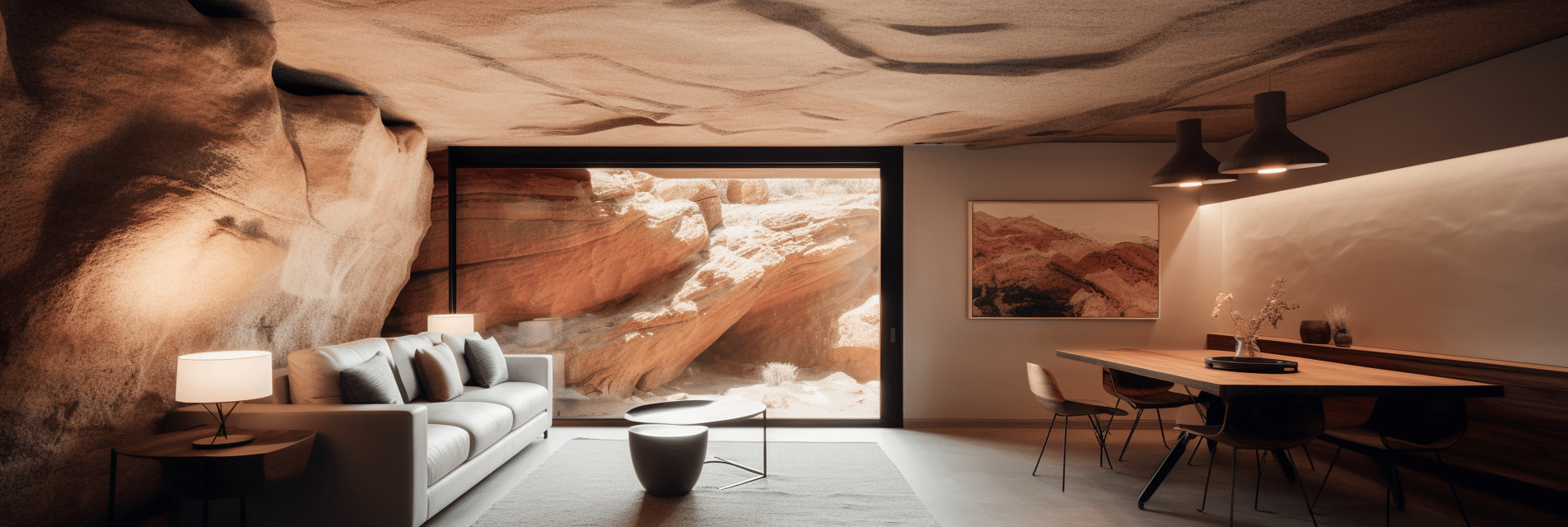Coober Pedy, a small town in South Australia, is renowned for its opal mining industry and unique underground homes known as “dugouts.” These dugout cave homes are not only fascinating but also sustainable, providing an innovative solution to the harsh climate of the Australian Outback. In this article, we will explore the history, features, and benefits of these remarkable dwellings.
A Brief History of Coober Pedy and Dugouts
Coober Pedy was established in 1915 following the discovery of opal in the region. The town’s name is derived from the Aboriginal term “kupa piti,” which translates to “white man’s hole” or “white man’s burrow” 1. This name is fitting, as the town’s residents have been digging holes and burrows for shelter since its inception.
The first dugouts were created by miners seeking refuge from the extreme temperatures of the Australian Outback. With daytime temperatures often exceeding 40°C (104°F) and limited resources for building traditional homes, the miners found that living underground provided a natural insulation from the heat 2.
Over time, the dugout homes evolved from simple shelters to more elaborate and comfortable dwellings, complete with modern amenities. Today, approximately half of Coober Pedy’s population resides in these unique underground homes 3.
Features of Dugout Cave Homes
Dugout cave homes are typically carved into the sandstone hillsides surrounding Coober Pedy. They can range from small, single-room dwellings to large, multi-room homes with multiple levels. Some dugouts even include underground swimming pools and gardens 4.
The interior walls of dugouts are often left with the natural sandstone finish, giving the homes a warm and earthy ambiance. Many residents choose to decorate their walls with artwork, carvings, or even embedded opal stones, adding a touch of personalization and creativity to their living spaces 5.
One of the most notable features of dugout homes is their consistent temperature. Due to the natural insulation provided by the earth, the interior temperature of a dugout remains relatively stable throughout the year, typically ranging between 22°C to 25°C (72°F to 77°F) 6. This not only makes the homes comfortable to live in but also reduces the need for energy-intensive heating and cooling systems.
Sustainability and Environmental Benefits
The dugout cave homes of Coober Pedy offer several environmental benefits, making them a sustainable housing option in the arid Australian Outback. Some of these benefits include:
-
Energy efficiency: As mentioned earlier, the natural insulation of the earth helps maintain a stable temperature inside the dugouts, reducing the need for heating and cooling systems. This results in lower energy consumption and reduced greenhouse gas emissions 7.
-
Water conservation: The town of Coober Pedy relies on underground water sources, which are scarce and precious in the arid region. Dugout homes help conserve water by maintaining a cooler and more humid environment, reducing the need for water-intensive evaporative cooling systems [^8^].
-
Resource conservation: Traditional above-ground homes require significant amounts of building materials, such as wood, concrete, and steel. In contrast, dugout homes utilize the existing sandstone, reducing the need for additional resources and minimizing the environmental impact of construction [^9^].
-
Preservation of natural landscape: By building homes underground, the natural landscape of Coober Pedy remains relatively undisturbed. This helps preserve the unique beauty of the Australian Outback and minimizes the impact of human development on the local ecosystem [^10^].
Conclusion
The dugout cave homes of Coober Pedy are a testament to human ingenuity and adaptability. These unique dwellings not only provide a comfortable and interesting living environment but also offer numerous environmental benefits, making them a sustainable housing option in the harsh Australian Outback.
As the world continues to grapple with the challenges of climate change and resource scarcity, the dugout homes of Coober Pedy serve as an inspiring example of how we can adapt to our surroundings and live in harmony with the environment.
-
Coober Pedy: The mining town where people live under the earth - CNN Travel ↩︎
-
[Sustainable Living in Coober Pedy - Australian Broadcasting Corporation](https://www.abc.net.au/radionational/programs/archived ↩︎
